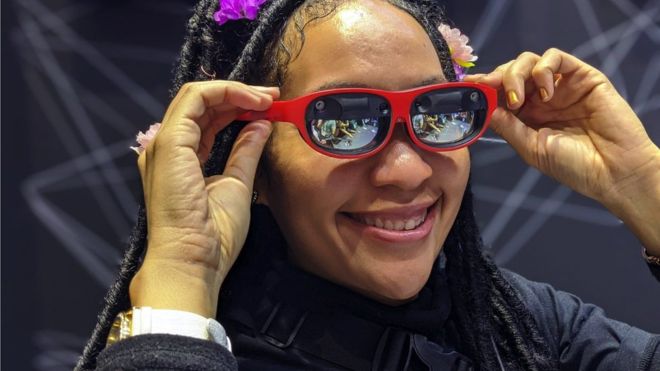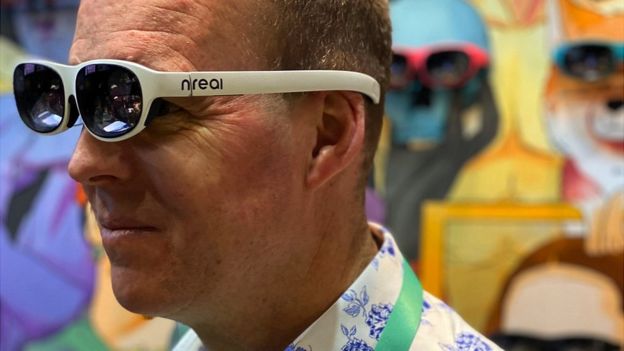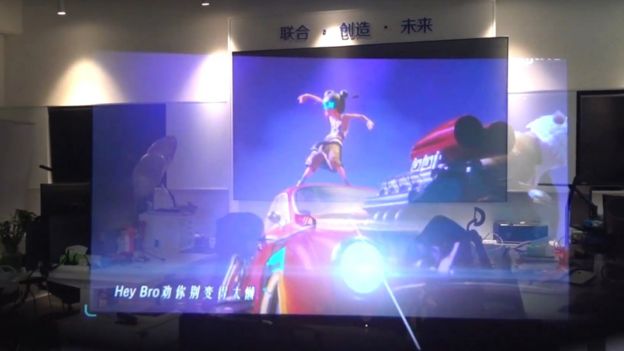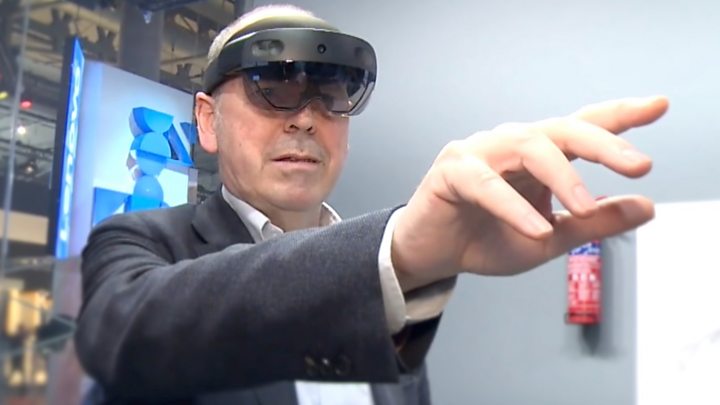CES 2020: Nreal’s mixed reality glasses win over sceptics

A pair of hi-tech glasses that superimposes computer graphics over real-world views has emerged as one of the most lauded products of this year’s CES tech expo.
Nreal, the Chinese start-up involved, has confounded the expectations of many industry watchers with the quality of the images its Light glasses produces.
The firm still faces issues.
One tester said the glasses looked a bit “clunky”, and the company is being sued by Magic Leap, a rival.
But long-time CES attendee Ben Wood, an influential tech consultant, declared them the “product of the show”.
 Image copyrightBEN WOOD
Image copyrightBEN WOOD“For years people have over-promised and under-delivered on augmented reality glasses,” the CCS Insight analyst told the BBC.
“Nreal seem to have quietly got on with delivering the product and are now set to ship it by the middle of the year.
“I’m not gong to pretend the glasses will be to everybody’s taste – this is still a first-generation product. But they are a lot closer to a normal pair of sunglasses than some of the other bulky smart glasses I’ve seen, and they definitely provide the best experience of augmented reality glasses at CES.”
Others too have praised the device.
Eye-tracking sensors
Nreal’s Light glasses require a tethered connection to an Android phone and come with their own touchpad controller.
Images produced by the device’s two displays – one for each eye – cover a 52 degree horizontal field-of-view (fov).
That means they only partially cover the 135 degree fov typically available to humans – but do so in a relatively crisp resolution of 1080p.
 Image copyrightNREAL
Image copyrightNREALMoreover, sensors track the eyes’ movements as well as 3D-mapping the view in front of them, so that digital characters and objects can be seen to interact with the environment.
Microphones and speakers are also built into the frames. And users control objects in view via what looks like a curved laser pointer.
Demos on show at the expo included a zombie shooter video game, making a simulated video call, and watching YouTube videos.
The glasses can also display standard Android apps placing several in sight simultaneously, letting wearers flick their view from one to another.
Social technology
Many in the tech industry believe augmented reality is set for mass adoption later this decade.
 Image copyrightNREAL
Image copyrightNREAL“Instead of having devices that take us away from the people around us, the next platform will help us be more present with each other,” Facebook chief Mark Zuckerberg wrote on Thursday.
“Even though some of the early devices seem clunky, I think these will be the most human and social technology platforms anyone has built yet.”
- Segway’s prototype wheelchair crashes at tech show
- Samsung’s invisible keyboard for smartphones
- Sex tech makes a splash at CES
But other companies have struggled to crack the market.
Seven years ago Google Glass was pitched as a consumer product, but the tech giant now targets its eyewear at factories and other business uses.
Magic Leap put its much anticipated mixed reality headset on sale to the public in August 2017 after raising more than $2.3bn (£2bn) in investment.
But a report last month indicated it only sold a fraction of the number of units it had forecast, and it too recently shifted its focus towards selling to industrial customers.
That leaves Microsoft’s HoloLens as being the Nreal’s main competitor.

Its second-generation product has a 70-degree fov and works via a self-contained computer. But it is significantly more bulky and several times more expensive than the Light glasses.
Nreal says it aims to sell its glasses for $499. By contrast, HoloLens 2 costs $3,500 and the Magic Leap 1 $2,295.
![]()








